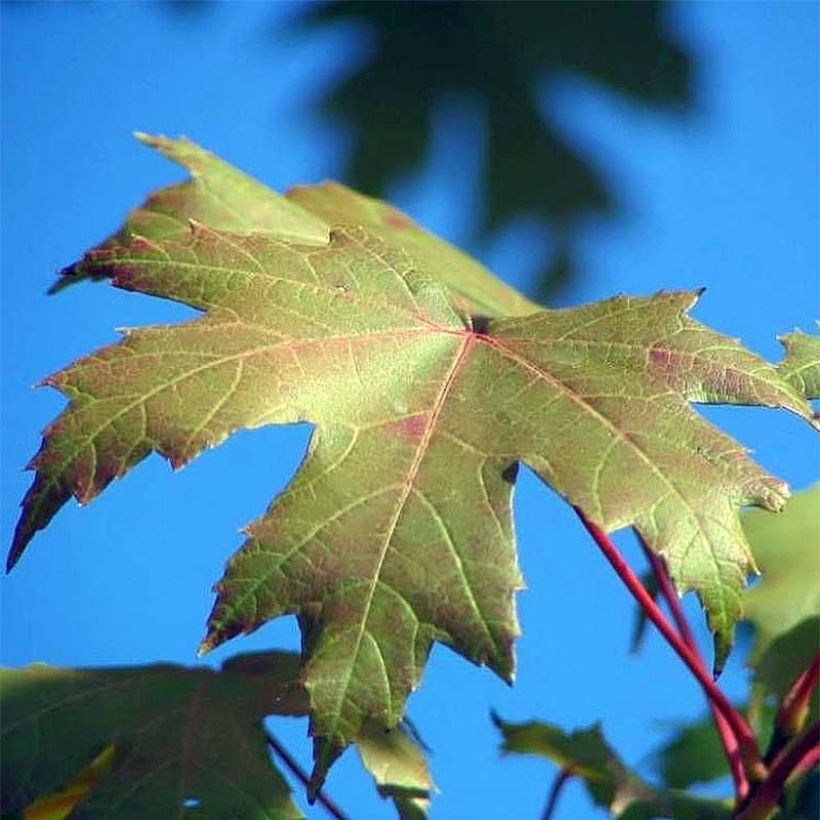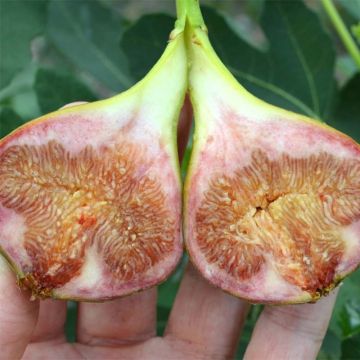

Acer freemanii Autumn Blaze - Maple


Acer freemanii Autumn Blaze - Maple
Acer freemanii Autumn Blaze - Maple
Acer x freemanii Autumn Blaze
Freeman Maple, Freeman's Maple
Very beautiful tree, received well packaged and pruned nicely.
Corinne, 18/11/2023
Special offer!
Receive a €20 voucher for any order over €90 (excluding delivery costs, credit notes, and plastic-free options)!
1- Add your favorite plants to your cart.
2- Once you have reached €90, confirm your order (you can even choose the delivery date!).
3- As soon as your order is shipped, you will receive an email containing your voucher code, valid for 3 months (90 days).
Your voucher is unique and can only be used once, for any order with a minimum value of €20, excluding delivery costs.
Can be combined with other current offers, non-divisible and non-refundable.
Home or relay delivery (depending on size and destination)
Schedule delivery date,
and select date in basket
This plant carries a 24 months recovery warranty
More information
We guarantee the quality of our plants for a full growing cycle, and will replace at our expense any plant that fails to recover under normal climatic and planting conditions.

Would this plant suit my garden?
Set up your Plantfit profile →
Description
Acer (x) freemanii 'Autumn Blaze' is a hybrid maple that combines the solid structure, attractive habit, and autumn colours of the red maple with the adaptability and fast growth of the silver maple. This medium-sized variety will reach a height of about 15 m (49 ft) by 12 m (39 ft) wide. It is valued for its upright and rounded shape, the vibrancy of its red-orange foliage in autumn, and its more or less rough bark that sheds beautifully. In the garden, this maple is extremely resistant to cold and wind. It can be planted as a specimen tree on a lawn or in the centre of a bed, or on the boundaries of the property, preferably in neutral to acid soil that remains moist.
Acer x freemanii 'Autumn Blaze', sometimes known as 'Jeffersred', was created in 1965 in the United States by Glenn Jeffers. It is the result of hybridisation between Acer rubrum and Acer saccharinum, which also hybridise naturally when these two species grow together in the wild, for example in Canada. This upright, deciduous tree grows rapidly, around 50 cm (20 in) per year, under favourable growing conditions. At maturity, it becomes more rounded, reaching an average height of 15 m (49 ft) with a spread of 12 m (39 ft). The deciduous foliage, deciduous, consists of opposite leaves, finely divided into 3 to 5 lobes. It is green in summer and turns intense red-orange in October. The flowering occurs in spring, in the form of small clusters of red flowers. This sterile maple does not produce fruits. The bark is smooth for the first few years, and is a light grey to silvery colour. Over the years, it takes on a light brown hue and a rough texture, which it sheds in strips. The root system of Acer x Freemanii 'Autumn Blaze' is dense and shallow, making it difficult to grow other plants at its base. A second taproot system, develops deep down in trees that are a few years old, anchoring the tree in the soil. Under the right growing conditions, this maple can live for more than 80 years. It is perfectly hardy, but can suffer from chlorosis in heavy, chalky soil.
Acer (x) freemanii 'Autumn Blaze' deserves to be better known and more widely planted in our gardens. It will look great as a specimen tree in a medium to large-sized garden, with its beautiful bark and autumn foliage making it interesting for much of the year. It can also be planted in a group together with Persian ironwood (Parrotia persica), smoke bushes, deciduous euonymus, and sweet gum trees. Together, they will create a flamboyant display at the end of the season. Easy to grow in moist soil and highly resistant to wind, it can also be used as a boundary tree on the edge of the garden.
Acer freemanii Autumn Blaze - Maple in pictures


Plant habit
Flowering
Foliage
Botanical data
Acer
x freemanii
Autumn Blaze
Aceraceae
Freeman Maple, Freeman's Maple
Cultivar or hybrid
Other Acer - Maple tree
View all →Planting and care
The Acer Autumn Blaze can be planted in spring or autumn in any deep, moist soil, in sunny or semi-shaded positions. This maple tree does not tolerate excessive lime in the soil, but adapts well to very wet soils. Beware of strong winds when the tree is young, stake it if necessary. Keep the soil moist during the first two summers after planting. Mulching can be used to maintain good soil moisture during hot summers. Pruning is not essential. Remove dead wood in spring. This maple tree can sometimes be affected by verticillium in heavy and compact soil.
Planting period
Intended location
Care
Planting & care advice
-
, onOrder confirmed
Reply from on Promesse de fleurs
Similar products
Haven't found what you were looking for?
Hardiness is the lowest winter temperature a plant can endure without suffering serious damage or even dying. However, hardiness is affected by location (a sheltered area, such as a patio), protection (winter cover) and soil type (hardiness is improved by well-drained soil).

Photo Sharing Terms & Conditions
In order to encourage gardeners to interact and share their experiences, Promesse de fleurs offers various media enabling content to be uploaded onto its Site - in particular via the ‘Photo sharing’ module.
The User agrees to refrain from:
- Posting any content that is illegal, prejudicial, insulting, racist, inciteful to hatred, revisionist, contrary to public decency, that infringes on privacy or on the privacy rights of third parties, in particular the publicity rights of persons and goods, intellectual property rights, or the right to privacy.
- Submitting content on behalf of a third party;
- Impersonate the identity of a third party and/or publish any personal information about a third party;
In general, the User undertakes to refrain from any unethical behaviour.
All Content (in particular text, comments, files, images, photos, videos, creative works, etc.), which may be subject to property or intellectual property rights, image or other private rights, shall remain the property of the User, subject to the limited rights granted by the terms of the licence granted by Promesse de fleurs as stated below. Users are at liberty to publish or not to publish such Content on the Site, notably via the ‘Photo Sharing’ facility, and accept that this Content shall be made public and freely accessible, notably on the Internet.
Users further acknowledge, undertake to have ,and guarantee that they hold all necessary rights and permissions to publish such material on the Site, in particular with regard to the legislation in force pertaining to any privacy, property, intellectual property, image, or contractual rights, or rights of any other nature. By publishing such Content on the Site, Users acknowledge accepting full liability as publishers of the Content within the meaning of the law, and grant Promesse de fleurs, free of charge, an inclusive, worldwide licence for the said Content for the entire duration of its publication, including all reproduction, representation, up/downloading, displaying, performing, transmission, and storage rights.
Users also grant permission for their name to be linked to the Content and accept that this link may not always be made available.
By engaging in posting material, Users consent to their Content becoming automatically accessible on the Internet, in particular on other sites and/or blogs and/or web pages of the Promesse de fleurs site, including in particular social pages and the Promesse de fleurs catalogue.
Users may secure the removal of entrusted content free of charge by issuing a simple request via our contact form.
The flowering period indicated on our website applies to countries and regions located in USDA zone 8 (France, the United Kingdom, Ireland, the Netherlands, etc.)
It will vary according to where you live:
- In zones 9 to 10 (Italy, Spain, Greece, etc.), flowering will occur about 2 to 4 weeks earlier.
- In zones 6 to 7 (Germany, Poland, Slovenia, and lower mountainous regions), flowering will be delayed by 2 to 3 weeks.
- In zone 5 (Central Europe, Scandinavia), blooming will be delayed by 3 to 5 weeks.
In temperate climates, pruning of spring-flowering shrubs (forsythia, spireas, etc.) should be done just after flowering.
Pruning of summer-flowering shrubs (Indian Lilac, Perovskia, etc.) can be done in winter or spring.
In cold regions as well as with frost-sensitive plants, avoid pruning too early when severe frosts may still occur.
The planting period indicated on our website applies to countries and regions located in USDA zone 8 (France, United Kingdom, Ireland, Netherlands).
It will vary according to where you live:
- In Mediterranean zones (Marseille, Madrid, Milan, etc.), autumn and winter are the best planting periods.
- In continental zones (Strasbourg, Munich, Vienna, etc.), delay planting by 2 to 3 weeks in spring and bring it forward by 2 to 4 weeks in autumn.
- In mountainous regions (the Alps, Pyrenees, Carpathians, etc.), it is best to plant in late spring (May-June) or late summer (August-September).
The harvesting period indicated on our website applies to countries and regions in USDA zone 8 (France, England, Ireland, the Netherlands).
In colder areas (Scandinavia, Poland, Austria...) fruit and vegetable harvests are likely to be delayed by 3-4 weeks.
In warmer areas (Italy, Spain, Greece, etc.), harvesting will probably take place earlier, depending on weather conditions.
The sowing periods indicated on our website apply to countries and regions within USDA Zone 8 (France, UK, Ireland, Netherlands).
In colder areas (Scandinavia, Poland, Austria...), delay any outdoor sowing by 3-4 weeks, or sow under glass.
In warmer climes (Italy, Spain, Greece, etc.), bring outdoor sowing forward by a few weeks.



























































